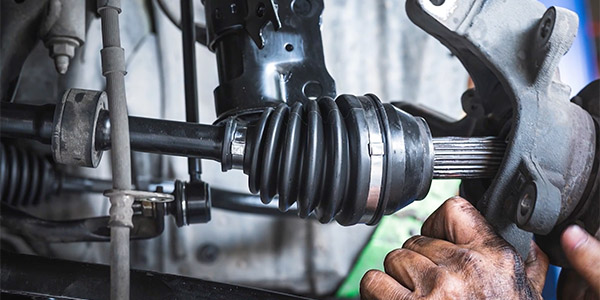Some turbocharger failures are quick and catastrophic. It could start with smoke from the tailpipe or even a catalytic converter clogged with oil and debris. The customer may notice the engine is down on power. These are easy to diagnose.
The cause of the failure might be related to the oil supply required to lubricate and cool the turbocharger’s bearings. In rare cases, a piece of debris can damage the compressor or the exhaust turbine.
The majority of turbocharger failures are less dramatic. They start with a code and a check engine light.
The engine management system knows the expected level of boost pressure for a given condition. DTC P0299 indicates the boost pressure is below expectations. Different vehicles might have other criteria for setting a P0299 DTC. One vehicle may specify the lower boost levels must occur for more than three seconds at a given throttle angle. Most require multiple incidents over one or two key cycles. If you have a scan tool, you can access the freeze-frame information when code P0299 was set.
A P0299 is not an automatic sign the turbocharger needs to be replaced. It is just a starting point for further inspection and diagnostics.
Finding the Root Cause
Mechanical failures of a turbocharger are usually related to the lubrication system. For the oil to cool and lubricate the turbo, it must flow. Restrictions in the oil feed or return lines can cause excessive heat along with shaft and bearing wear.
Oil restrictions are typically caused by carbon deposits in the lines and passages. When an engine stops turning, the oil flowing to the turbocharger stops. The oil inside the turbocharger might drain out of the center section through the return line. The remaining oil in the center section is heated to the point where it’s turned to carbon deposits or what some people call “coke.” This process can happen even faster if the driver is using low-quality oil.
Just about every turbocharged engine sold in the past ten years has an electric pump circulating engine coolant through the turbocharger’s center section for two to five minutes after the motor stops. The circulating coolant helps to cool the turbocharger and prevent coking the oil inside the center section.
When the bearings and shaft wear, the seals can start to leak oil into both the exhaust and compressor sides of the turbocharger. This oil can poison the catalytic converter and even restrict the flow of exhaust gases. This can cause low boost pressure.
In rare cases, foreign objects can enter the turbocharger. On the intake side, the air filter may fail due to excessive pressure differential that rips the filter media from the frame. The pressure differential is typically caused by a clogged filter.
On the exhaust side, foreign objects can come from anything that can exit the exhaust port. If you are dealing with an engine failure with catastrophic damage, the turbocharger could be damaged.
Installation Protection
There are several ways to protect a new turbocharger. The lines that supply and return it the oil pan should be flushed and even replaced if available. Before the engine is started, the turbocharger should be pre-lubricated with a large syringe in the oil supply line.
Take time to test the battery. Why? The coolant pump that moves coolant through the center section of the turbocharger when the engine is shut off will not operate for the full amount of time if it senses the battery voltage has dropped below a specific range. The ECM will cut the cooling time to ensure enough voltage to restart the car when the driver returns. This can lead to damage to the turbocharger.
The most important thing is to educate the customer on proper maintenance and oil changes. Most OEMs have specific grades and certifications for vehicles with turbocharged engines. Using the least expensive or what is available at a gas station can damage the turbocharger.
This video is sponsored by Cardone.













